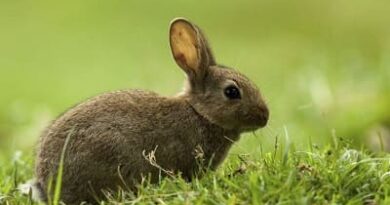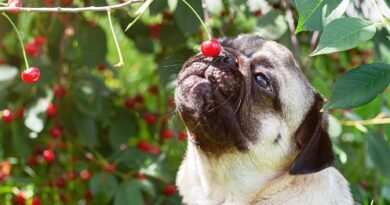What horses eat?
What horses eat?
Horses are animals with a particularly sensitive digestive system. In fact, one of the main reasons for consultation in the equine clinic is gastrointestinal colic. Providing an adequate diet adapted to each situation is undoubtedly one of the pillars that helps maintain the gastrointestinal health of these animals. But do you know what horses eat?

How is the horse’s diet?
Horses are herbivorous animals that have a digestive system specifically designed to digest and assimilate products of plant origin:
- Your stomach is small : since it is not a storage organ. The speed of passage of food through the stomach is very fast, and only the pre-digestion of the fibrous fraction, the nitrogenous fraction and a small proportion of carbohydrates (specifically, soluble carbohydrates) is carried out in it.
- Your small intestine is between 16 and 24 meters long : it is where enzymatic digestion and absorption of soluble carbohydrates, starch, protein, fat, and most minerals take place.
- Your large intestine is very voluminous : in fact, it can have a volume of up to 180-220 liters. Unlike the stomach and the small intestine, transit in the large intestine is slow, since it is the place where the fiber is digested. The microbiota (beneficial microorganisms) present in the large intestine transform structural carbohydrates (fiber) into volatile fatty acids, which are absorbed and used as a source of energy.
In general, horses base their diet on the consumption of products of plant origin . However, the specific composition of their diet varies considerably depending on the activity they are engaged in (competition horses, leisure horses, companion horses, etc.) and depending on the regime in which they live. If you want to discover how the diet of a domestic horse differs from that of a wild horse, do not miss the following sections.
What does a domestic horse eat?
To explain what domestic horses eat , we must first differentiate the different regimes in which these animals can be kept:
- Stabling : they are animals that are permanently stabled, although they leave the box daily to exercise. It is usually the regime in which sports or leisure horses are kept.
- Extensive : they are animals that live permanently in meadows, in conditions of semi-freedom. Animals of native breeds, which are well adapted to the conditions of the environment in which they live, are usually kept in this regime.
- Semi-extensive : they are animals that usually live in a fenced meadow but that, either at night, or when there is not enough grass or there are unfavorable weather conditions, are stabled.
Stalled horse diet
The diet of the stabled horse must include the following elements:
- Fodder : it is the basis of the horse’s diet. Temed fodder (hay), dehydrated fodder (in the form of pellets), silage or haylage can be used, although the best option is to provide quality hay. It should be noted that alfalfa should not be provided in large quantities, since it has too high protein levels.
- Concentrate (cereal feed) : it is the most energetic part of the ration. One of the most used cereals is oats, since it has a lot of fiber and little starch. In any case, it is preferable that the cereals used in feed are treated, either with heat, crushed, shelled, etc.
- Complementary foods : including mineral stones (especially in sports horses, which sweat profusely), multivitamins, and vegetables or fruits (such as carrots, apples, etc.).
The daily ration , between the concentrate and the forage, must represent between 1.5 and 2% of the weight of the animal . However, the amount can increase up to 2.25% in animals that perform intense exercise, or even up to 2.5% in pregnant or lactating mares, growing foals or horses that perform very intense exercise.
The forage/concentrate ratio is also important . Generally, they are usually provided in a 50/50 proportion, although in horses with greater energy demand, the amount of concentrate can be increased with respect to that of forage. However, the amount of forage should never be reduced below 35%.
Since horses are animals with a delicate digestive system, it is recommended to distribute the daily ration in 2 or 3 doses , and whenever possible, they should be administered every day at the same times. In addition, it is recommended that they have rest periods of approximately one hour, before and after food. That is, animals should be prevented from exercising both before and after eating.
Extensive horse diet
The animals that live extensively have a diet based exclusively on grazing and browsing . In these cases, it is usual that, to make better use of the pastures and ensure the availability of food throughout the year, the animals are rotated between different fences or transhumance is practiced.
Extensive horses only consume green fodder , which contains a large amount of water and has a low energy value. Unlike stabled horses, these animals do not have a concentrated source of energy in their diet, which is why they spend long periods of time eating (both day and night). So much so that an extensive horse can spend up to 18 hours a day eating .
Semi-extensive horse diet
The semi-extensive regime is one in which grazing is combined with complementary feeding . In these cases, it is important to estimate the amount of green forage that the animal consumes while grazing, and to provide complementary food accordingly. Depending on the needs of the animal, the diet can be supplemented only with forage (preferably hay), with concentrate, or with both types of feed.
What do wild horses eat?
At this point, what does a wild horse eat? The diet of wild horses is practically identical to that of domestic horses that live extensively. These animals feed by grazing and browsing , and have a diet based on the consumption of grass, flowers, buds, etc.
What not to include in the horse’s diet?
Now that we know what both domestic and wild horses eat, we need to mention those foods that should not be included in the diet of these animals. We mention them below:
- Food of animal origin : as we have explained, horses are herbivorous animals that have a digestive system adapted to exclusively process and assimilate food of plant origin. For this reason, all foods of animal origin (meat, fish, milk, eggs, etc.) must be excluded from the equine diet.
- Foods rich in starch and sugars : such as bread, pastries, sweets, etc.
- Toxic foods for horses : such as chocolate, garlic, onion, leek, potatoes, avocado, etc.
- Indigestible foods : such as broccoli, cabbage, cauliflower, Brussels sprouts, etc.
- Food intended for other animal species : horse food is specially designed to cover the nutritional and energy needs of these animals. The fact of providing food formulated for other species can cause nutritional imbalances, and digestive or metabolic pathologies, for this reason horses should only be fed with feed formulated for the equine species.



